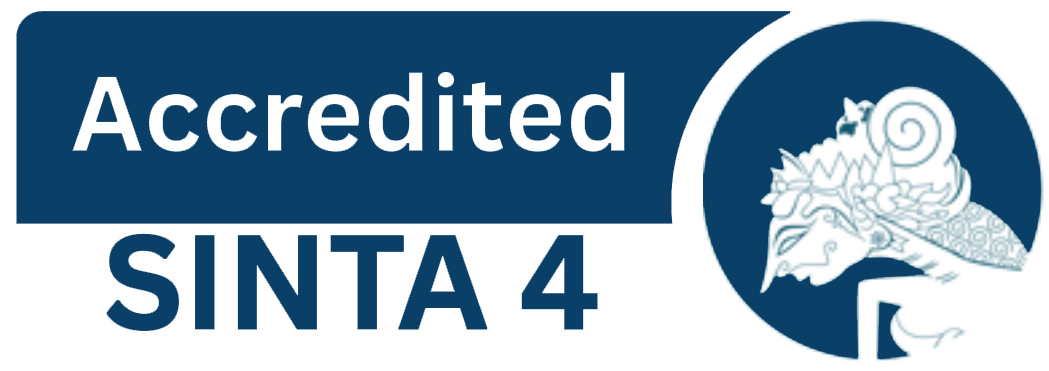UPAYA GURU MENINGKATKAN KETERLIBATAN SISWA KELAS K1 DALAM PEMBELAJARAN SYNCHRONOUS
DOI:
https://doi.org/10.22460/collase.v4i3.7154Keywords:
keterlibatan siswa, tahap perkembangan siswa, pembelajaran synchronousAbstract
Selama Pandemi Covid-19, kegiatan belajar beralih ke pembelajaran online yang tentunya mempengaruhi keterlibatan siswa yang menggambarkan minat dan motivasi belajar mereka. Keterlibatan siswa dapat mendukung pencapaian tujuan pembelajaran dan mengarahkan siswa untuk menghubungkan relevansi pembelajaran dengan kehidupan mereka. Fakta yang ditemukan pada kelas K1 di sekolah adalah siswa kurang menikmati pembelajaran yang tercermin dari kurangnya respon siswa selama pembelajaran. Makalah ini bertujuan untuk mendeskripsikan pentingnya keterlibatan siswa usia dini dalam pembelajaran online dan menjelaskan berbagai upaya yang dilakukan guru untuk meningkatkan keterlibatan siswa K1 berdasarkan aspek perkembangannya dalam pembelajaran synchronous. Penulisan skripsi ini menggunakan metode deskriptif kualitatif dengan jurnal pendukung, buku, dan data portofolio dari praktik mengajar. Solusi yang penulis buat untuk membangun student engagement adalah dengan menyesuaikan kegiatan pembelajaran yang sinkron dengan pendekatan aspek perkembangan anak usia dini. Dengan demikian, siswa dapat terlibat aktif dalam pembelajaran sinkron melalui kegiatan-kegiatan yang mendukung aspek-aspek perkembangannya yang menjadi fokus PAUD. Guru diharapkan dapat melibatkan siswa secara aktif melalui pengkajian kebutuhan aspek perkembangan siswa, sehingga siswa terlibat dalam pembelajaran.
References
Ambarini, R., Setyaji, A., & Zahraini, D. A. (2018). “Interactive Media in English for Math at Kindergarten: Supporting Learning, Language and Literacy with ICT.†Arab World English Journal, 4(4), 227–241. https://doi.org/10.24093/awej/call4.18
Bergdahl, N., Nouri, J., & Fors, U. (2020). Disengagement, engagement and digital skills in technology-enhanced learning. Education and Information Technologies, 25(2), 957–983. https://doi.org/10.1007/s10639-019-09998-w
Bond, M., Buntins, K., Bedenlier, S., Zawacki-Richter, O., & Kerres, M. (2020). Mapping research in student engagement and educational technology in higher education: a systematic evidence map. International Journal of Educational Technology in Higher Education, 17(2), 1–30. https://doi.org/10.1186/s41239-019-0176-8
Cunningham, A. (2019). Envisioning Christian presence and practice in online teaching contexts. International Journal of Christianity and English Language Teaching, 6, 3–19.
Dodi, N. (2016). Pentingnya Guru Untuk Mempelajari Psikologi Pendidikan. Nusantara ( Jurnal Ilmu Pengetahuan Sosial ), 1, 59–63.
Francescucci, A., & Rohani, L. (2018). Exclusively Synchronous Online (VIRI) Learning: The Impact on Student Performance and Engagement Outcomes. Journal of Marketing Education, 41(1), 60–69. https://doi.org/10.1177/0273475318818864
Goldman, Z. W., Goodboy, A. K., & Weber, K. (2017). College Students’ Psychological Needs and Intrinsic Motivation to Learn: An Examination of Self-Determination Theory. Communication Quarterly, 65(2), 167–191. https://doi.org/10.1080/01463373.2016.1215338
Hännikäinen, M., & Rasku-Puttonen, H. (2010). Promoting children’s participation: The role of teachers in preschool and primary school learning sessions. Early Years, 30(2), 147–160. https://doi.org/10.1080/09575146.2010.485555
Jeffrey, L., Milne, J., Suddaby, G., & Higgins, A. (2014). Blended Learning: How Teachers Balance the Blend of Online and Classroom Components. Journal of Information Technology Education: Research, 13, 121–140. https://doi.org/10.28945/1968
Khasanah, F. (2016). Meningkatkan Keaktifan Belajar Siswa Melalui Model Pembelajaran Kooperatif Tipe STAD( Students Teams Achievement Division). Jurnal Ilmiah, 18(2), 48–57.
Kim, J. (2020). Learning and Teaching Online During Covid-19: Experiences of Student Teachers in an Early Childhood Education Practicum. International Journal of Early Childhood, 52(2), 145–158. https://doi.org/10.1007/s13158-020-00272-6
Lin, M.-H., Chen, H.-C., & Liu, K.-S. (2017). A study of the effects of digital learning on learning motivation and learning outcome. Eurasia Journal of Mathematics, Science and Technology Education, 13(7), 3553–3564. https://doi.org/10.12973/eurasia.2017.00744a
Lupascu, A. R., Pânisoară, G., & Pânisoară, I.-O. (2014). Characteristics of effective teacher. Social and Behavioral Sciences, 127, 534–538. https://doi.org/10.1016/j.sbspro.2014.03.305
Macklem, G. L., & Gayle, L. (2015). Boredom in the Classroom Addressing Student Motivation, Self-Regulation, and Engagement in Learning. https://doi.org/10.1007/978-3-319-13120-7
Martin, F., & Bolliger, D. U. (2018). Engagement matters: Student perceptions on the importance of engagement strategies in the online learning environment. Online Learning Journal, 22(1), 205–222. https://doi.org/10.24059/olj.v22i1.1092
Munawir, A. (2020). Penguasaan Konsep Arah Mata Angin dengan Metode Treasure Hunt di Sekolah Dasar. 9(2), 265–272.
Nezhad, A. S., & Vahedi, M. (2011). The role of educational psychology in teacher education programs. Procedia - Social and Behavioral Sciences, 30, 327–330. https://doi.org/10.1016/j.sbspro.2011.10.064
Nugrahani, F. (2014). Metode Penelitian Kualitatif dalam Penelitian Pendidikan Bahasa. Solo: Cakra Books.
Omar, N. D., Hassan, H., & Atan, H. (2012). Student Engagement in Online Learning : Learners Attitude Toward E-Mentoring. Procedia - Social and Behavioral Sciences, 67, 464–475. https://doi.org/10.1016/j.sbspro.2012.11.351
Parette, H. P., Hourcade, J., & Blum, C. (2011). Using Animation in Microsoft PowerPoint to Enhance Engagement and Learning in Young Learners with Developmental Delay. TEACHING Exceptional Children, 43(4), 58–67. https://doi.org/10.1177/004005991104300406
Rachman, H. A., & Anggita, G. M. (2018). The Development Pattern of Early Age Children’s Motor Skills. Journal of Physical Education, Sport, Health and Recreations, 7(2), 104–112. Retrieved from https://journal.unnes.ac.id/sju/index.php/peshr/article/view/23652/11051
Rahim, N. B. (2020). Improving Student Engagement and Behavioural Outcomes via Persistence among Distance Learners. 90(2), 91–102. https://doi.org/10.17576/akad-2020-9002-08
Salim, H., & Haidir. (2019). Penelitian Pendidikan: Metode, Pendekatan, dan Jenis. Jakarta: Kencana.
Santrock, J. W. (2018). Educational psychology, 6th ed. In Educational psychology, 6th ed. (6th ed.). New York: McGraw-Hill Education.
Siegler, R., DeLoache, J., Eisenberg, N., & Saffran, J. (2014). How Children Develop (4th ed.). New York: Worth Publishers.
Singh, K. (2016). Role of physical education and sports in Indian prospective: An over view. International Journal of Physical Education, Sports and Health, 3(5), 280–282. Retrieved from http://www.kheljournal.com/archives/2016/vol3issue5/PartE/3-5-63-713.pdf
Turner, J. C., & Patrick, H. (2004). Motivational influences on student participation in classroom learning activities. Teachers College Record, 106(9), 1759–1785. https://doi.org/10.1111/j.1467-9620.2004.00404.x
Wasik, B. (2008). When fewer is more: Small groups in early childhood classrooms. Early Childhood Education Journal, 35(6), 515–521. https://doi.org/10.1007/s10643-008-0245-4
Woolfolk, A. (2016). Educational Psychology (13th ed.). Harlow: Pearson.



